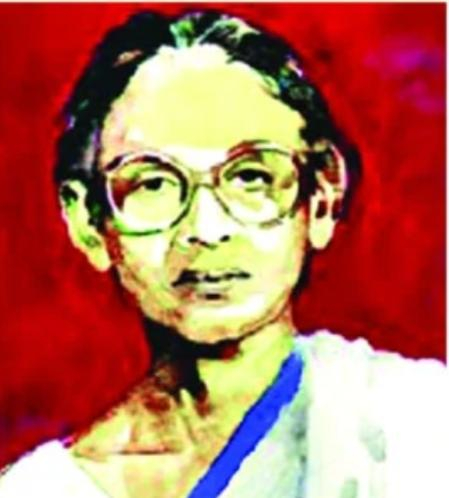Published: 10:20 AM, 14 October 2025
Ila Mitra: The Fearless Revolutionary Who Became the ‘Rani Ma’ of Bengal’s Farmers

Sangram Datta: On the streets of Nachol in the 1940s, a young woman with unwavering resolve walked among the farmers, her presence both commanding and comforting. She was Ila Mitra, later to be revered as the “Rani Ma” of the Santals and a symbol of fearless activism in Bengal’s turbulent mid-20th century.
Born on October 18, 1925, in a well-to-do Kolkata household, Ila was the eldest of six children. Her father, Nagendranath Sen, held a government post, while her mother, Monorama Sen, ensured a disciplined household. Yet, from an early age, Ila exhibited a curiosity and courage that transcended the comforts of her home. By 1944, she had earned a B.A. with honors from Bethune College; in 1957, she completed her M.A. in Bengali literature and Sanskrit.
But it was politics that captured her heart. Even as a student, Ila gravitated toward the Communist Party, women’s self-defense groups, and hunger marches during periods of scarcity. When famine struck, she worked tirelessly to feed the hungry, manage community kitchens, and protect vulnerable women from exploitation.
In 1945, marriage brought her to the village of Ramchandrapur in Chapai Nawabganj. Confronting the rigid hierarchy of a zamindar family and the inertia of rural society, she became a teacher in a new school for girls — a bold step in a conservative landscape.
Soon, her activism extended to agrarian struggles. Alongside her husband, Communist leader Ramendranath Mitra, she challenged the oppressive zamindari system and championed the rights of local farmers. During the Tebhaga movement of 1946–50, which demanded two-thirds of the harvest for sharecroppers, Ila’s leadership was pivotal. She organized farmers, inspired women, and even earned the trust of tribal communities, who came to regard her as one of their own.
“She was not just a leader,” recalls a former Santal activist. “She was our Rani Ma. She understood our struggles, our fears, our hopes.”
Yet the movement faced brutal repression. The killing of four policemen during protests prompted severe crackdowns. Ila herself was humiliated and imprisoned, later sentenced to life along with 22 others. National figures like Maulana Abdul Hamid Khan Bhasani campaigned for her release. In 1954, she finally returned to Kolkata on parole and never went back to East Bengal.
Life in India was initially harsh. Ila lived in slums for years before resuming her academic and political career, teaching at Kolkata City College and serving four consecutive terms in the West Bengal Legislative Assembly. Twice, she was Deputy Leader of the Communist Party in the Assembly. In 1971, she mobilized support for Bangladesh’s independence, further cementing her reputation as a tireless advocate for justice.
Throughout her life, Ila Mitra faced imprisonment, political hostility, and social barriers, yet her courage never wavered. She was recognized by the Indian government as a freedom fighter and honored for her contributions to athletics. Her translation of Hiroshima’s Daughter earned her the Soviet Nehru Prize.
Ila Mitra passed away on October 13, 2002, in Kolkata. Today, decades after her battles on the fields of Bengal, her story continues to inspire: a testament to resilience, conviction, and the enduring power of a fearless heart.




